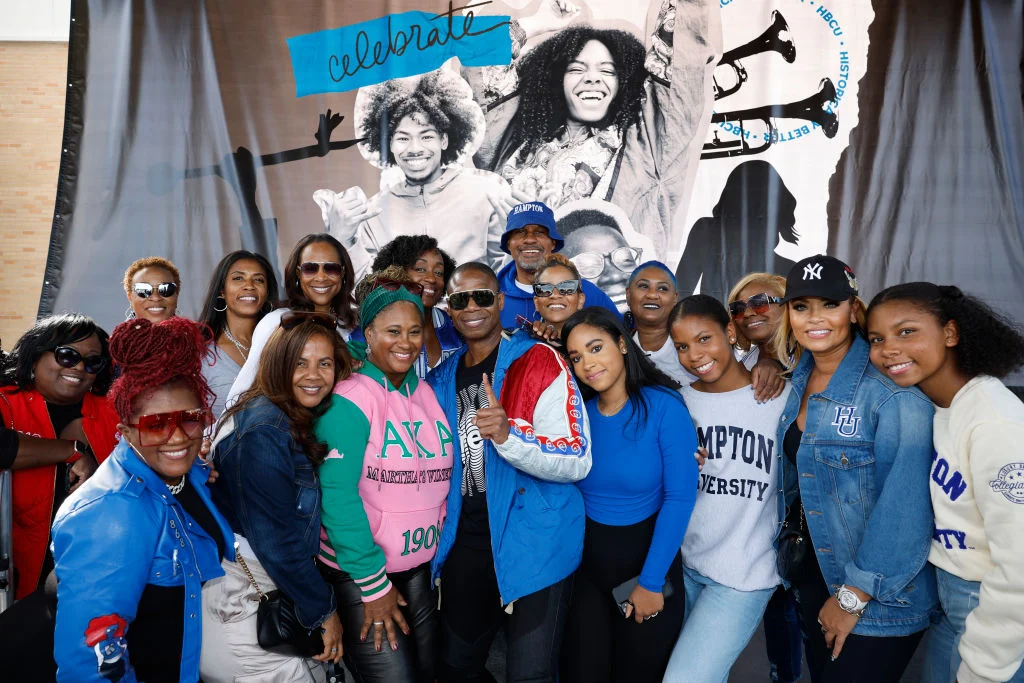### DNC’s Strong Focus on HBCUs This Homecoming Season
As homecoming season unfolds across Historically Black Colleges and Universities (HBCUs), the Democratic National Committee (DNC) is stepping up its outreach efforts to connect with young Black voters. This initiative comes in response to a noticeable decline in support for the Democratic Party among this demographic during the last election cycle.
In October, the DNC confirmed plans for several on-campus activations at institutions such as Hampton University, Norfolk State University, Virginia State University, Cheney University, and Lincoln University. These events are part of a significant investment aimed at engaging students, parents, and alumni alike.
### Understanding the DNC’s Strategy
DNC Chairman Ken Martin emphasizes that homecoming is a time of culture, community, and credibility. He remarks, “Our presence at these events is absolutely critical. But it’s not just political; it’s personal for all those students and the families that come out.” This approach aims to reinvigorate connections with Black voters, particularly younger ones who expressed their discontent during the 2024 election results.
Despite Black voters’ overall support for 2024 Democratic nominee Kamala Harris over Donald Trump, voter turnout in 2024 was notably lower than in 2020. The data reflects a worrying trend: younger Black males appear to be increasingly drawn to the Republican Party.
Martin asserts, “We’re showing up where it matters to Black voters, not just in presidential years,” highlighting a commitment to maintain ongoing conversations with this crucial demographic.
### A Call for Trust and Engagement
Recognizing the party’s past missteps, Martin emphasizes the importance of consistent engagement rather than a last-minute rush before elections. He articulated the need to rebuild trust, acknowledging that many voters feel overlooked and only see political leaders when they’re being solicited for votes.
“The DNC plans to execute a range of activations this HBCU homecoming season, including handing out ‘Commit to Vote (CTV)’ cards, ‘Get out the Vote (GOTV)’ volunteer sign-up forms, and branded paraphernalia,” Martin explains. These efforts aim to foster a sense of community and activism among students during homecoming festivities.
### HBCUs as Political Focal Points
The DNC’s focus on HBCUs takes on added significance in light of recent events, including threats that prompted lockdowns at several HBCUs. Martin acknowledges the need for the Democratic Party to show up in solidarity during such challenging times, reinforcing the notion that community and political ties are intertwined.
Highlighting the recent uninvited debates on HBCU campuses, Martin states, “It underscores the need for us as a party right now…to be there in solidarity because those threats were ridiculous.” He draws a clear connection between political rhetoric and the climate for students, stressing the impact of divisive language and actions in politics today.
### Economic Concerns Among Young Voters
Beyond political engagement, Martin underscores the broader economic anxieties facing young Black voters today. He notes, “Young people right now are very nervous about their future.” With more job seekers than job openings, many are struggling with the rising costs of housing, groceries, and childcare.
Acknowledging the distinct challenges particularly affecting young Black men, Martin emphasizes, “We gotta give people a sense that the Democratic Party believes…that you deserve a chance and an opportunity to get ahead.” This message reinforces the party’s commitment to addressing the real-life issues faced by its constituents.
### HBCUs and Recent Political Climate
The DNC’s focus on HBCUs also aligns with broader national discussions. Recent funding controversies, including significant cuts and reallocations by the Trump administration, have put HBCUs at the forefront of debate. While some funding has been redirected to these institutions, critics argue it fosters unhealthy competition among minority-serving institutions.
Martin critiques past administrations’ approaches, claiming promises made to Black voters have often fallen short. He insists that while some assistance has been provided, it should not overshadow the broader needs of the Black community.
He concludes, “At a time when so many people are struggling to get by in this country, he continues to play games like this,” stressing the urgency for an equitable political and economic landscape.



